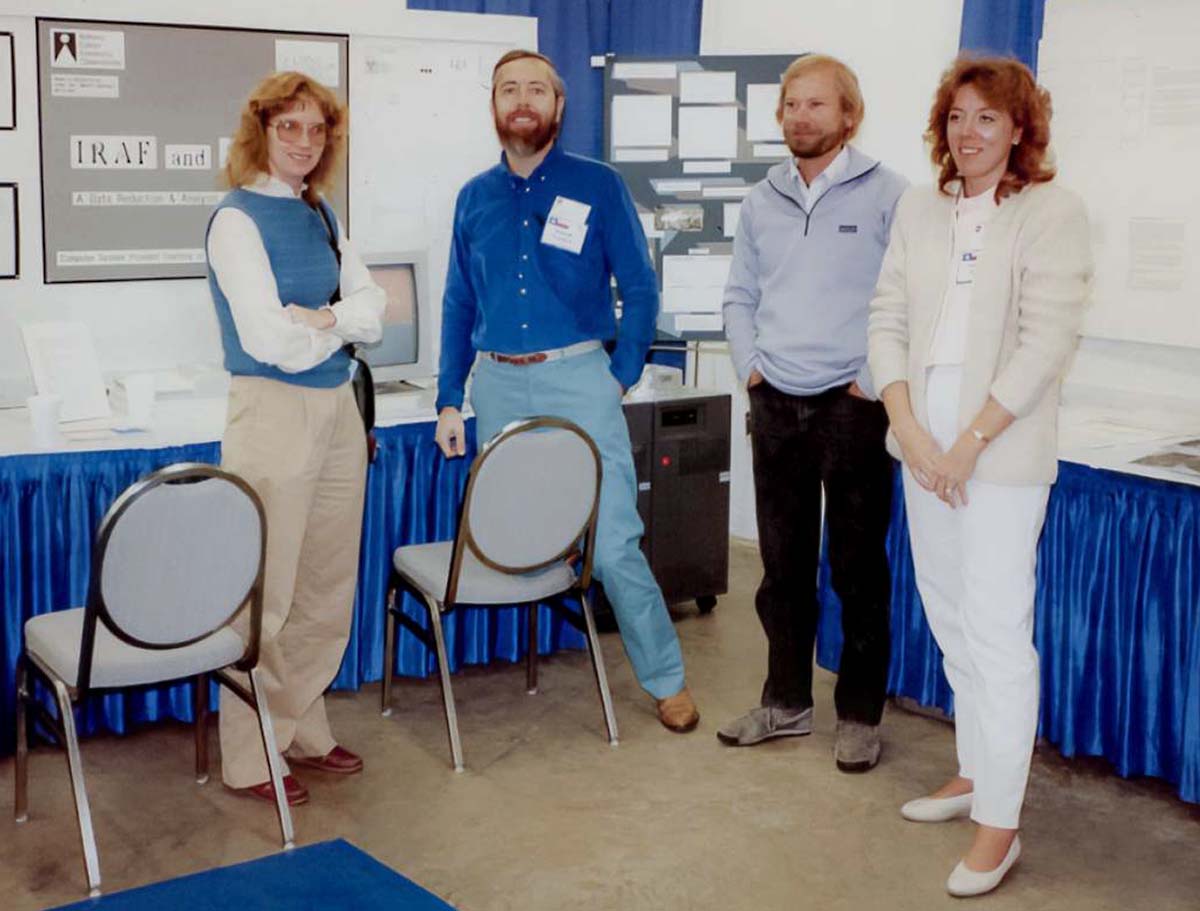Remembering Doug Tody, the ‘Father of IRAF’

By Vanessa Thomas
Former NOAO employee Doug Tody, who was the visionary behind the Image Reduction and Analysis Facility (IRAF), has passed away from complications related to cancer.
Born in 1952 in West Branch, Michigan, Doug attended high school in Lansing and received a bachelor’s degree in physics from Michigan State University.
Doug began working at Kitt Peak National Observatory (KPNO) in 1975 and devoted the next 27 years of his career to NOAO. He started out as a telescope operator and later joined the small Tucson programming group as “a self-taught scientific programmer with a very high level of expertise in software systems and design,” says NOIRLab astronomer Steve Ridgway, who managed the Central Computer Services team, of which the IRAF Group was a part.
By 1980 Doug had proposed and begun championing the development of IRAF as a standard set of software to reduce and analyze astronomical data from all of the NOAO telescopes. Despite strong opposition by some who thought that funding would be better spent elsewhere, KPNO director Geoff Burbidge supported the idea and the IRAF development team was formed in 1981 under Doug’s leadership as the chief programmer. When IRAF was publicly released in 1986, it provided a common framework that allowed astronomers anywhere to reduce data at the telescope or their home institutions and publish results that could be universally understood. It has since been used to reduce and analyze optical and infrared data from ground- and space-based observatories around the world and has contributed to the publication of nearly 25,000 scientific papers.
“Doug was central to the creation of IRAF, a product that was widely used in the international community for decades since the mid-1980s as the primary way of handling data from telescopes,” says Research and Science Services (RSS) director Abi Saha. “In fact it continues to be used by many to this day. It was adapted and modified as needed to serve the needs of most observatories, including the Hubble Space Telescope. In its time it was among the most influential contributions to astronomy to come out of 950 North Cherry Avenue in Tucson.”
According to Steve Ridgway, Doug was one of several KPNO staff who initiated the first Astronomical Data Analysis Software and Systems (ADASS) conference, which was held in Tucson in 1991 and has since become an annual international meeting with about 400 participants. In October 2021 Doug and former IRAF Group members Frank Valdes and Lindsey Davis (who was also Doug’s wife) received the ADASS Prize for an Outstanding Contribution to Astronomical Software for the design and development of the core IRAF system.
Doug also received the first NOAO Outstanding Achievement Award in 1986. “He said it meant something to his family members who ‘do not know what an IRAF is’,” Steve Ridgway remembers.
Doug also contributed to the development of the Virtual Observatory (VO) and National Virtual Observatory (NVO), which provided astronomers with central portals for data and tools from multiple ground- and space-based astronomical observatories. “Doug was a key contributor to concepts behind some of the VO infrastructure and was an NOAO representative to the NVO,” explains Frank Valdes. “Doug’s influence can be seen in the design of several VO interfaces developed early on while he was helping to lead the data access working group,” adds NOIRLab software systems engineer Mike Fitzpatrick, who worked with Doug on both IRAF and the VO project.
According to some of his former colleagues, Doug had high standards for his projects that he was not willing to compromise, and it sometimes made others feel that he was stubborn or difficult to work with. “But he always stuck to his principles and always produced the highest quality software,” says former STScI senior scientist and former USVAO director Bob Hanisch, who worked with Doug to adopt IRAF at STScI and apply it to Hubble data.
“The wide adoption of IRAF by the community, and its usefulness to this day, are further evidence of Doug’s commitment to quality software,” asserts Mike Fitzpatrick. “Most of what I know about system design, and especially the idea that I can always push a project further to make it better, comes from my experience working with Doug.”
“Doug was a real treasure,” Steve Ridgway adds. “He was grateful to have observatory support to pursue his vision, and he gave as much of himself as anybody could possibly give, year after year.”
